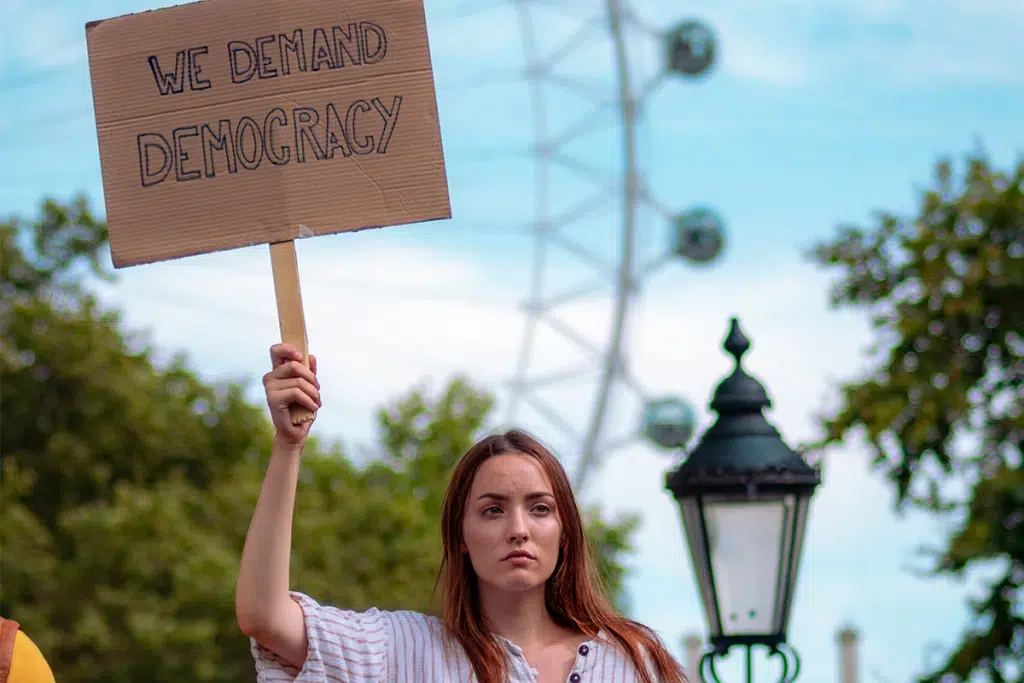It is unclear what benefits the plan secures that are not already concrete terms in the current collective labor agreement (CAO). Hopefully, there will be some clarification of this before the vote deadline on February 14. What are arguably the most important provisions for those who face layoffs definitely already exist in the CAO (e.g., the 3-month durations of each of the “dismissal protection” and “notice” periods; the priority for internal vacancies; VU-funded retraining for “reassignment candidates”; mobility premium; etc.). What are we really gaining that is not already established in our legally binding CAO?
Agreeing to the social plan amounts to consenting to the largely opaque, top-down reorganization process as it is conceived and executed by faculty boards and the CvB. For most of you, whose departments have not already entered the process of reorganization, this issue may still seem distant and abstract. However, if you want a concrete and tangible description of how it is carried out, ask one of your fellow workers in the Earth Sciences department.
The VU may indeed have strict and dire constraints on its budget. How many of us, however, have a thorough understanding of these constraints and the different possibilities for dealing with them (e.g., borrowing to prevent layoffs followed by gradual deficit reduction by replacing voluntary departures and retirements with internal workers; selling fixed assets estimated at 725 billion Euro in the 2023 Jaarverslag; the possibility of workers taking regular unpaid leave; etc.). Certainly, few of us want to know these details. We are predominantly teachers, researchers, technicians, and employee-support staff. We may not want to also be tasked with making decisions about the broad operations of the university. But what about when mass layoffs (hundreds or thousands of workers?) are imminent? Are we now willing to take matters into our own hands and have influence on how we reduce our deficit? I propose the following broad outline for a social plan to replace the current draft:
- Planned and ongoing reorganizations are temporarily put on hold until decisions on how to proceed are reached democratically (voting power given to each worker).
- Faculty boards and the CvB are relieved of their power to plan and execute reorganizations. They may maintain their positions in an advisory capacity (see the following points for more details on this role).
- Elected delegates of workers (not necessarily department management teams) from each department meet regularly with the faculty boards and CvB. These meetings take place collectively (i.e., not one department at a time) and mutually (i.e., free of a hierarchy giving the faculty/executive boards ultimate decision-making power). The purpose of these meetings is initially to clarify the magnitude and source of the deficit, and ultimately to propose alternative reorganization plans. Because of the urgency of the situation, these meetings should take place frequently (e.g., once per week or biweekly).
- In conjunction with the department delegate-FB/CvB meetings, department-wide meetings take place regularly (e.g., once per week or biweekly) to debrief on the content of the department delegate-FB/CvB meetings and to give all workers the opportunity to provide input in the evolving discussions and planning.
- Various alternative reorganization plans reached in the department delegate-FB/CvB meetings with input from all workers of each department must be ratified by popular vote, with every university worker (including those with temporary contracts) being given one vote.
- There is a basic provision to avoid involuntary dismissals at all reasonable costs (i.e., considering borrowing or selling assets if it is not detrimental to the overall operations of the university). In the case of involuntary layoffs, a new amelioratory social plan is drafted to provide benefits for those effected. Former administrators (e.g., faculty and executive board members) are also subject to potential layoffs.
- The decision to stage a political strike to demand increased funding if the budget (and pressure for reorganization) is untenable is made democratically with each university worker (including temporary workers) being given one vote.
I recognize that points 1-6 above are framed around the inevitability of reorganization and acknowledge that this may be a fallacy. Given that we are providing high-quality education and research, yet are still often overworked, indicates that there is no large-scale redundancy in our operations that requires downsizing. If anything, a reduction of student numbers could relieve some degree of the overwork that we experience. Point 7 gives us the power to make the decision of collective action (e.g., striking) if the state-imposed budget is untenable. In my opinion, it already is, and such action is warranted. This proposal for an alternative “social plan” should not distract us from our action against the state-imposed austerity budget for education. It is intended to address the other facet of austerity: the university’s seemingly logical response (reorganization), which has not yet generated retaliation nearly as strong as that against the recent proposed budget cuts from the government.
This proposed “social plan” is intended to replace the current model for top-down planning and implementation of reorganizations. However, I also advocate for democratization of university operations more broadly (i.e., in “normal” times without impending reorganizations). Democratization of decision-making at universities may be a drastic shift in paradigm, but we ostensibly value democracy in society. Why not our workplace, especially during a time of crisis? We may not want the additional workload and responsibility of being significantly involved in decision making. However, the alternative – top-down, opaque reorganization planning with emphasis on layoffs – is certainly not more promising. If we take matters into our own hands, we have the opportunity to democratically reach decisions that protect our jobs and maintain the high-quality education and research that we provide.

Voting Yes geeft de VU collega’s perspectief voor een goed vangnet wanneer de arbeidsplaats als gevolg van de 60 miljoen bezuinigingen komt te vervallen. De 60 miljoen bezuiniging gaat niet weg door Nee te stemmen.